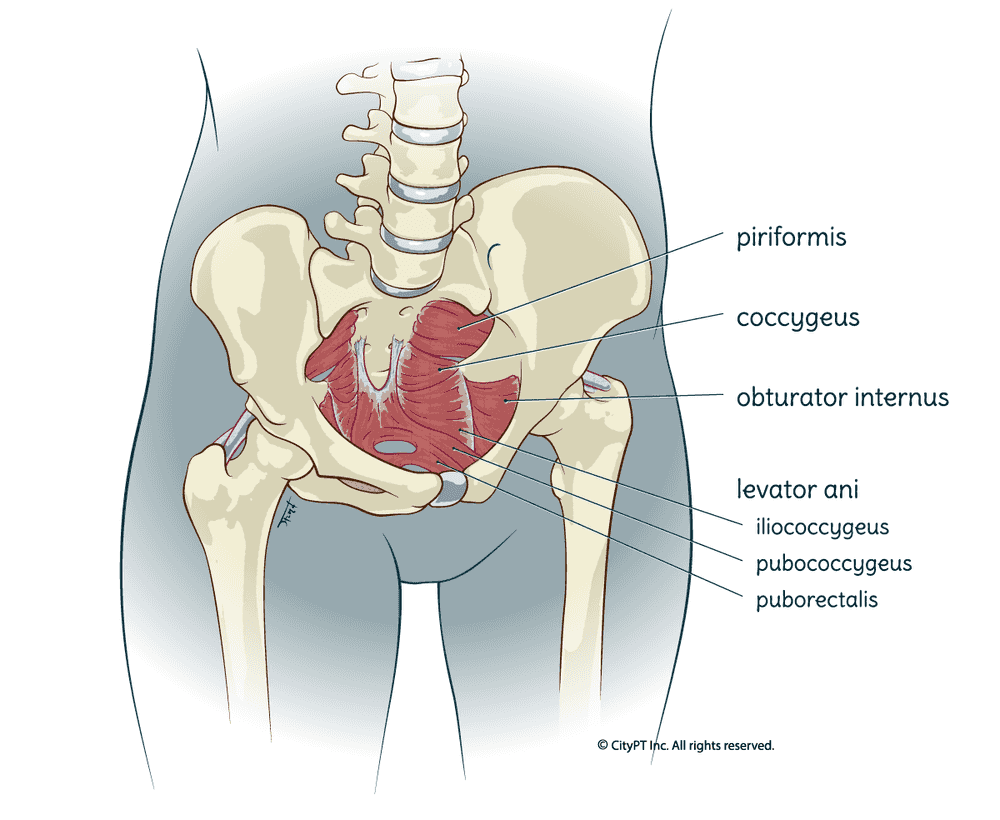Pelvic floor therapy should be the first line of treatment for pelvic floor dysfunction. But my patients often wonder, is pelvic floor therapy covered by insurance?
While insurance plans vary dramatically, there are some instances in which pelvic physical therapy is covered by insurance.
In this article, I'll discuss pelvic floor dysfunction and pelvic floor physical therapy a bit more, introduce other payment options, and explain how you can increase the odds of finding pelvic floor therapy that's covered by insurance.
Key Takeaways
- Most major insurance providers (Blue Cross, Medicare, Medicaid, Cigna) typically cover pelvic floor therapy when it's medically necessary, though coverage specifics vary by plan and state regulations.
- Understanding the difference between in-network and out-of-network providers is crucial, as it significantly impacts out-of-pocket costs and claim submission procedures.
- If insurance denies coverage, you shouldn't be discouraged - I've helped patients successfully overturn initial denials by providing additional documentation of medical necessity.
- Alternative payment options, such as HSA/FSA accounts, can help make pelvic floor therapy more affordable, even when insurance coverage is limited or unavailable.
Table of Contents
- Does Your Insurance Provider Cover Pelvic Floor Dysfunction?
- How State Regulations Affect Your Coverage
- What Constitutes Pelvic Floor Dysfunction and Symptoms?
- Pelvic Floor Therapy Treatment Options
- Finding the Best Pelvic Floor Therapist for You
- Cost and Benefits of Pelvic Floor Treatment Without Insurance
- Navigating Insurance Claims and Appeals
- Pelvic Floor Therapy Coverage Bottom Line
Does Your Insurance Provider Cover Pelvic Floor Dysfunction?
It wasn't that long ago that major insurance companies didn't recognize pelvic floor therapy as medically necessary treatment. It was disheartening to see patients who needed care being denied coverage.
Most major private insurance companies began covering some form of pelvic floor therapy between approximately 2005-2015, though coverage was initially quite limited. Medicare began covering pelvic floor physical therapy around 2006-2007 when it recognized certain CPT codes for pelvic floor muscle training and biofeedback.
Understanding Coverage by Major Insurance Providers
Most major insurance providers offer some coverage for pelvic floor therapy, though specific benefits vary by plan. Here's what you can typically expect:
Blue Cross Blue Shield: Generally covers pelvic floor therapy under outpatient physical therapy benefits. Coverage details depend on your specific plan and state regulations. Most plans require a physician referral and documentation of medical necessity.
Medicare: Covers pelvic floor therapy when deemed medically necessary with proper documentation from your healthcare provider. Medicare Part B typically covers 80% of the approved amount after you've met your deductible. Sessions must be considered reasonable and necessary for your condition.
Medicaid: Coverage varies significantly by state. Some states mandate coverage for pelvic floor therapy under women's health services, while others may provide coverage with specific restrictions. Check with your state's Medicaid office for details.
Cigna: Generally covers pelvic floor therapy with documentation of medical necessity. Most Cigna plans require prior authorization and limit the number of covered sessions per year.
UnitedHealthcare: Typically covers pelvic floor therapy as part of physical therapy benefits when deemed medically necessary. Coverage usually requires a physician referral and may be limited to a specific number of sessions.
Aetna: Covers pelvic floor therapy with documentation of medical necessity. Most plans require preauthorization and have specific visit limitations.
How State Regulations Affect Your Coverage
Insurance coverage for pelvic floor therapy can vary significantly based on state regulations. Some states have enacted laws that require insurance companies to cover specific treatments related to pelvic floor dysfunction.
States with Enhanced Coverage Requirements:
- California requires coverage for medically necessary treatment of urinary incontinence
- New York mandates coverage for physical therapy, including pelvic floor services
- Illinois has requirements for coverage of postpartum care, including pelvic floor therapy
- Massachusetts provides expanded coverage for women's preventive services
Coverage Variations: Even within states with mandates, coverage details can differ based on:
- Whether your plan is fully insured or self-funded
- If your plan is grandfathered under older regulations
- Specific diagnosis codes and medical necessity documentation
Checking Your State's Requirements: Contact your state's insurance commissioner's office or Department of Health to learn about specific mandates that may apply to your coverage.
What Constitutes Pelvic Floor Dysfunction and Symptoms?
The pelvic floor is a set of muscles in the shape of a hammock that supports many organs in your pelvic region. However, if you have pelvic floor dysfunction, some of these organs may not perform the way that they should and can cause some discomfort.

A pelvic floor dysfunction is a condition where you have difficulty controlling your pelvic floor muscles, leading to an inability to properly contract and relax them throughout the day, such as during bathroom use.
The pelvic floor consists of connective tissues, ligaments, and muscles that support the organs in the pelvis and keep them safe. These organs include the following:
- Bladder
- Urethra
- Bowel
- Rectum
- Anus
- Uterus (female)
- Vagina (female)
- Prostate (male)
I have patients that experience issues with their pelvic floor muscles being either too tight or too weak, or a combination of both. I've seen this imbalance affect their muscle function in various ways, including during toileting, physical activities, or sexual intercourse.
For instance, weak pelvic floor muscles can lead to incontinence, causing unintentional and sometimes embarrassing leakage of urine or fecal matter. Conversely, they might also result in difficulties with effectively expelling these substances.
Many women believe these problems only exist after you have had children. This is not always the case. I have many patients who have never had children and have sought care for different types of pelvic floor dysfunction.
It's estimated that around 1 in 3 women have pelvic floor dysfunction. This estimate doesn't include the ones who don't seek help for the issue, as some people may be uncomfortable discussing pelvic health, making pelvic floor dysfunction vastly underdiagnosed.
Did you know? Despite the common misconception, pelvic floor dysfunction isn't just a "women's issue." Men make up approximately 16% of pelvic floor therapy patients, with conditions ranging from chronic prostatitis to post-surgical complications.
Symptoms may vary, but some of the possible symptoms include the following:
- Trouble urinating
- Starting and stopping during urination
- Painful urination
- Constipation
- Leaky stool or urine
- Frequently having to go to the bathroom
- Straining to have a bowel movement
- Lower back pain
- Pelvic pain
- Painful sexual intercourse
Pelvic Floor Therapy Treatment Options
Pelvic floor treatment will provide several benefits if you have pelvic floor issues. Some of these benefits include:
- Reducing pain
- Restoring the proper function of organs and muscles
- Improving bladder and bowel control
- Treating pelvic organ prolapse
- Improving sexual function
One of the first things I offer my patients with pelvic floor conditions is more education on the pelvic floor area. I may also suggest potential lifestyle changes or exercises they can do to improve their condition.
Some of the treatment options I commonly recommend to my patients include:
Exercises
Pelvic floor exercises are an excellent option to help to strengthen and improve the function and mobility of the pelvic floor muscles. While exercise programs vary from patient to patient depending on their goals and condition, some exercises I have my patients try include:
- Kegels
- Bridge pose
- Squats
- Toe taps
- Pelvic floor lengthening
- Heel slides
- Lunges
- Happy baby pose
- Deep diaphragmatic breathing exercises
Don't be fooled! Kegels are far from the only exercise we prescribe! Many of my clients have been doing them on their own for years, only to discover they weren't the most appropriate option for treating their symptoms.
Biofeedback
Biofeedback involves using sensors to check for contractions of your pelvic floor muscles. Physical therapists use biofeedback as a great tool to help strengthen weak muscles or loosen up tight muscles.
Medication
Some medications can help people who have pelvic floor issues. Your doctor might choose to recommend medication based on your symptoms. Some common recommendations include a stool softener for people who have trouble going to the bathroom. Botox injections may help people with tight pelvic floor muscles relax more easily. However, I'd again like to emphasize that the necessity for any medication varies by patient.
Dry Needling
Dry needling involves inserting small, non-injectable needles in or around pelvic floor muscles, connective tissues, or trigger points. The needle causes a contraction and helps to relax the muscles or area.
Trigger Point Treatment
Trigger point treatment focuses on manually releasing tense segments or 'knots' in the pelvic floor muscles. A pelvic floor physical therapist skilled in these techniques can not only perform these releases but also teach you how to perform them on yourself. They may even choose to show you how to effectively use tools like dilators or vaginal wands for self-treatment at home.
Electrical Stimulation
Electrical stimulation is a pain-free treatment that involves sending an electrical current to stimulate nerves and muscles in the pelvic floor region. The pelvic floor muscles will contract, and this helps to strengthen them.
Finding the Best Pelvic Floor Therapist for You
Finding the best pelvic floor physical therapist is essential. Pelvic floor health is a sensitive topic — you want to be comfortable with whoever you work with.
Some factors include:
- Appointment time: You should check the appointment length. If you have a condition that may need more work, having longer appointments could allow you to receive more specialized care and save money.
- Continuing Education: You should check if the clinic or therapist has taken continuing education classes emphasizing the pelvic floor area.
- Experience: You should find out if the clinic has experience treating your condition and, if so, what its go-to pelvic floor treatment methods are.
- Specialty Clinic: You should check if pelvic floor therapy is offered in a specialty clinic with a practice dedicated to pelvic health.
- Insurance or cash-based: You'll want to ask if they take insurance and if the providers are in or out of your network. You can also ask if they are cash-based. Often, the total cost of care for cash-based treatment is less than using insurance.
- Internal and external treatment: Most pelvic floor physical therapists are trained to assess your pelvic floor muscles through internal examination, either via the vaginal or rectal canal. This approach provides a more detailed understanding of your pelvic floor's functionality. However, it is not mandatory if you are uncomfortable with an internal examination. The decision to proceed with internal assessment is entirely up to you.
Understanding In-Network vs. Out-of-Network Benefits
Choosing between in-network and out-of-network providers significantly impacts your out-of-pocket costs when seeking pelvic floor therapy. Understanding these differences can help you make informed decisions about your care.
In-network providers have negotiated contracted rates with your insurance company, substantially lowering out-of-pocket costs. When visiting these providers, you typically only pay your copay or coinsurance at the time of service. These providers handle claim submissions directly with your insurance company, simplifying the payment process.
Out-of-network providers, while sometimes offering specialized expertise, come with financial considerations. They may charge higher fees without contracted insurance rates, often requiring full payment upfront. You'll likely need to submit insurance claims for potential reimbursement, and your expenses may apply to a separate, higher deductible than in-network services.
Pro Tip: Some insurance plans offer "gap exceptions" if no in-network pelvic floor specialists are available near your home. Ask your insurance if they'll cover an out-of-network specialist at in-network rates in this situation.
Finding in-network pelvic floor therapists can require some research:
- Call your insurance company's customer service number for provider recommendations
- Use your insurance provider's online directory to search for specialists
- Contact potential therapists directly to verify they accept your specific insurance plan
Many highly specialized pelvic floor therapists choose not to participate in insurance networks. If you find a highly recommended specialist who is out-of-network, ask about superbills for potential reimbursement through your insurance.
Using Superbills for Insurance Reimbursement
If your pelvic floor therapist doesn't directly bill your insurance or is out-of-network, a superbill can help you seek reimbursement.
A superbill is a detailed invoice containing all the information your insurance company needs to process your claim, including provider information (name, address, NPI number), your personal and insurance details, diagnosis codes (ICD-10), service codes (CPT), and itemized charges with dates.
To use a superbill effectively:
- Request one from your therapist after each session
- Verify all information is accurate and complete
- Submit it to your insurance company following their claims process
- Keep copies of all documentation and correspondence
- Follow up within 30 days if you don't receive a response
Even if your insurance initially denies coverage, proper superbill documentation significantly strengthens your position for appeals. Many providers routinely prepare these documents for patients seeking reimbursement, so don't hesitate to ask.
Cost and Benefits of Pelvic Floor Treatment Without Insurance
You should still seek treatment even if your insurance doesn't cover pelvic physical therapy. If you let pelvic floor dysfunction continue without treatment, your symptoms could get worse, and you could end up needing surgery later. In my experience, the cost of a course of pelvic floor PT is much less than what surgery or more invasive procedures will cost.
On average, a pelvic floor therapy session can range between $80-$250 or more, depending on your specific treatment. Although paying out of pocket for pelvic floor therapy may seem challenging, financial options are usually available.
Some physical therapy providers offer cash-based treatment. One of the benefits of cash-based physical therapy is that you can receive all the care and attention you deserve without having to share your session time with others.
We know you may still have some questions, so following are some common questions and answers about pelvic floor physical therapy.
Navigating Insurance Claims and Appeals
Even with proper documentation of medical necessity, insurance claims for pelvic floor therapy may sometimes be denied. Understanding how to navigate the claims and appeals process is crucial for maximizing your coverage.
Filing Initial Claims Successfully
When submitting claims for pelvic floor therapy, ensure your therapist uses the correct diagnosis (ICD-10) and treatment (CPT) codes that accurately reflect your condition.
Verify all documentation clearly establishes medical necessity and submit claims promptly to avoid missing filing deadlines. Always keep copies of all paperwork and maintain a detailed log of all communications with your insurance company.
Handling Claim Denials
Insurance companies may deny claims for various reasons, including:
- Missing or incorrect information
- Insufficient documentation of medical necessity
- Treatment classified as "experimental."
- Provider network restrictions
- Exceeding allowed visit limits
Don't be discouraged by an initial denial - many claims are successfully overturned on appeal when properly documented.
The Appeals Process
If your claim is denied, carefully review the denial letter to understand the reason. Gather additional supporting documentation from your healthcare providers, including detailed clinical notes and research supporting the effectiveness of treatment for your condition.
Submit a formal appeal within your insurer's specified timeframe (typically 30-180 days), including a letter from your doctor explicitly stating why the treatment is medically necessary for your specific condition.
After submitting your appeal, follow up regularly on its status. If internal appeals are unsuccessful, you may have the right to request an external review through your state's insurance department, which provides an independent evaluation of your case.
Did You Know? According to healthcare advocacy groups, up to 60% of denied insurance claims are overturned when patients appeal the decision. Your persistence can literally pay off!
Frequently Asked Questions
Do I need a doctor's referral to go to pelvic floor therapy?
No, you don't need a doctor's referral to go to pelvic floor therapy. However, some insurance providers will require you to have a referral.
How much does pelvic floor rehab cost?
On average, one session of pelvic floor rehab can cost between $80 and $250. However, many factors can affect the cost.
Is pelvic floor PT worth it?
Yes, if you want relief from your pelvic floor dysfunction. Pelvic PT gives people better control over their bowel and bladder functions so they can have a better quality of life. It often helps people to avoid surgeries that they may have been considering for treatment of their symptoms.
Why would a doctor recommend pelvic floor therapy?
If you've been diagnosed with any pelvic floor dysfunction, a doctor could recommend pelvic floor therapy. I strongly encourage being proactive about your symptoms, no matter how minor, and asking your physician if they think therapy may be an appropriate option. Addressing your concerns early always gives you a chance of better outcomes.
How painful is pelvic floor therapy?
If you have internal treatment and the muscles are tight, you may experience some discomfort initially, but most therapy options are painless.
Pelvic Floor Therapy Coverage Bottom Line
So, if you’re asking yourself, is pelvic floor physical therapy covered by insurance? Chances are your pelvic floor therapy is covered, but you'll want to check with your insurance company to make sure.
Then, you should check with the pelvic therapy clinic and find out if they accept insurance or if you'll need to pay for it.
If you're ready for pelvic physical therapy and want to work with a physical therapist specializing in pelvic health, contact CityPT to book an appointment today and let us help you recover.
Before you go, please read our disclaimer. This blog is intended for informational purposes only. We are not providing legal or medical advice and this blog does not create a provider-patient relationship. Do not rely on our blog (or any blog) for medical information. Always seek the help of a qualified medical professional who has assessed you and understands your condition.

Dr. Hollie Champion, a native of Charlotte, NC, is dedicated to offering innovative and accessible care for women experiencing pelvic floor dysfunction. She emphasizes a personalized and holistic treatment approach in her practice. When not working, Hollie is an enthusiastic tennis player and loves to discover Charlotte's diverse attractions with her husband, Will, and their dog, Jojo.

Dr. Hollie Champion, a native of Charlotte, NC, is dedicated to offering innovative and accessible care for women experiencing pelvic floor dysfunction. She emphasizes a personalized and holistic treatment approach in her practice. When not working, Hollie is an enthusiastic tennis player and loves to discover Charlotte's diverse attractions with her husband, Will, and their dog, Jojo.



